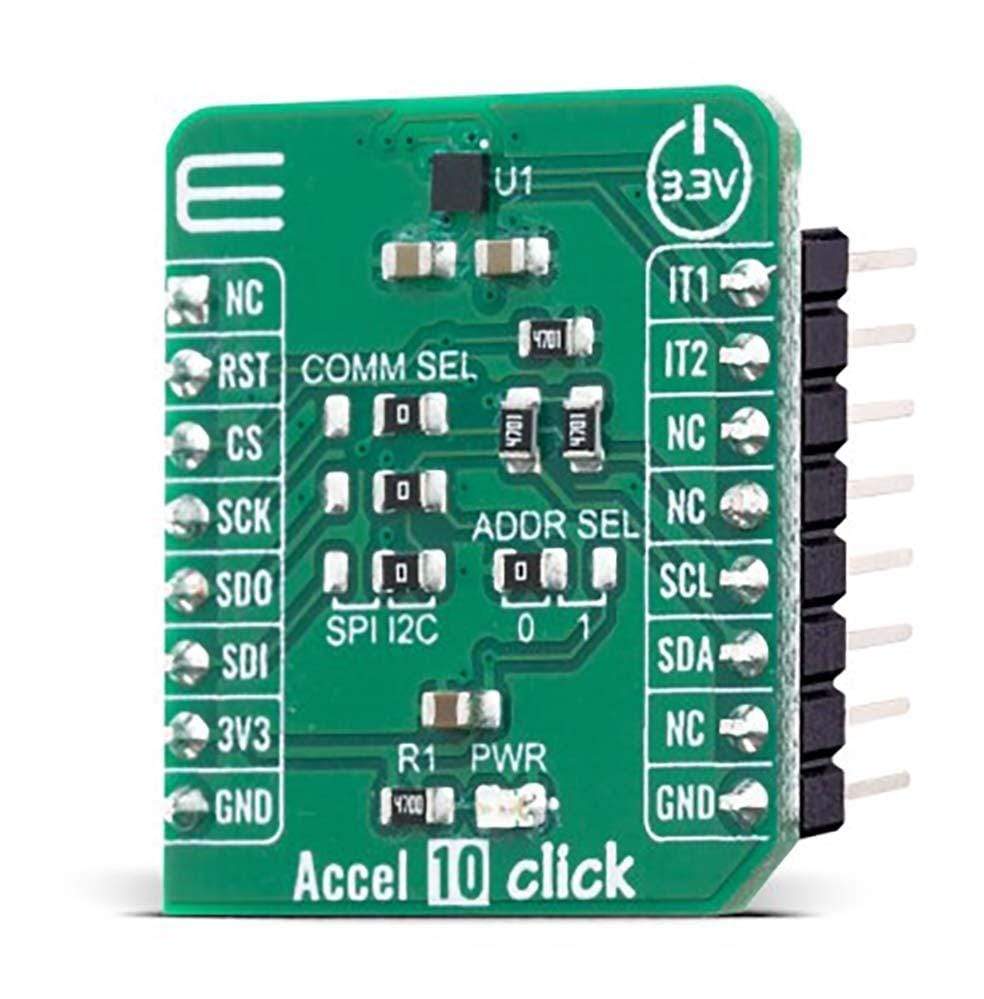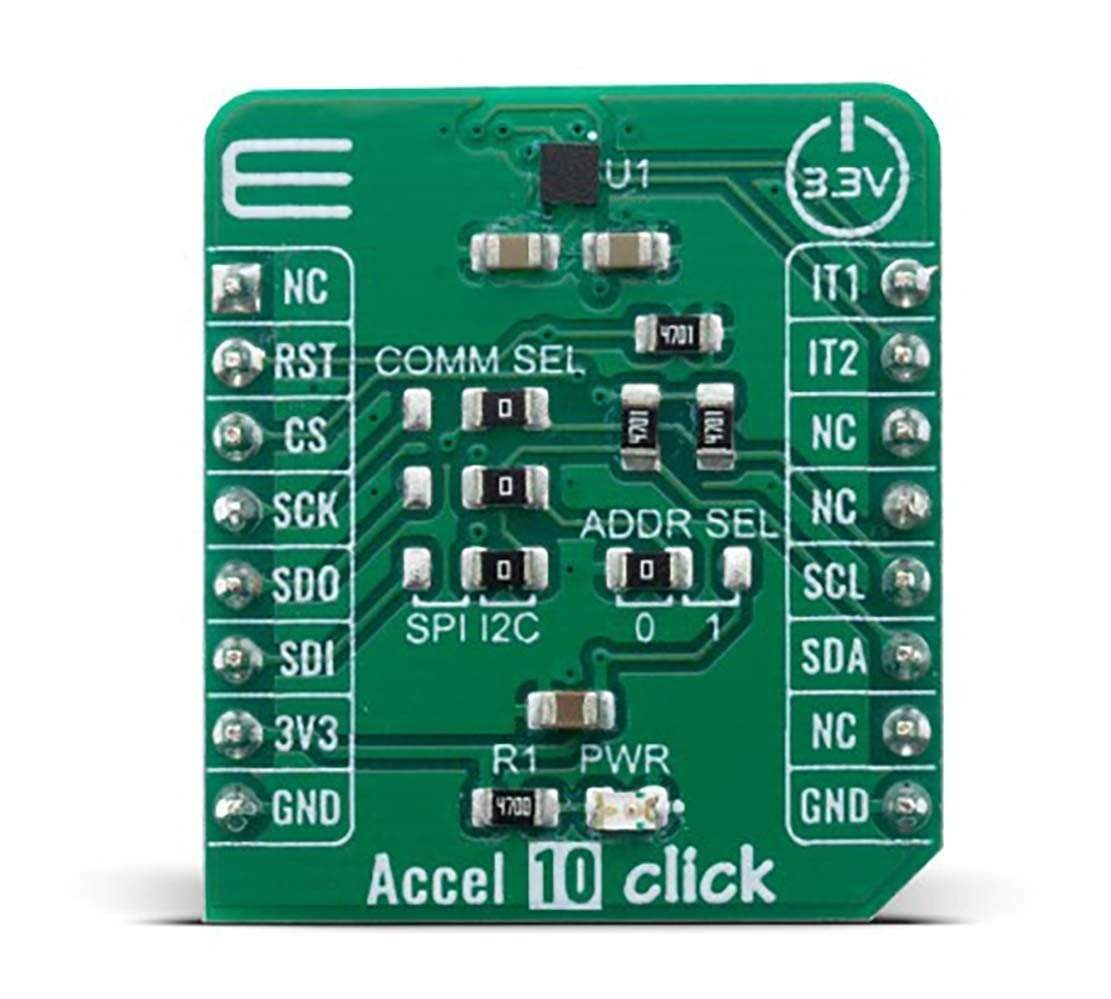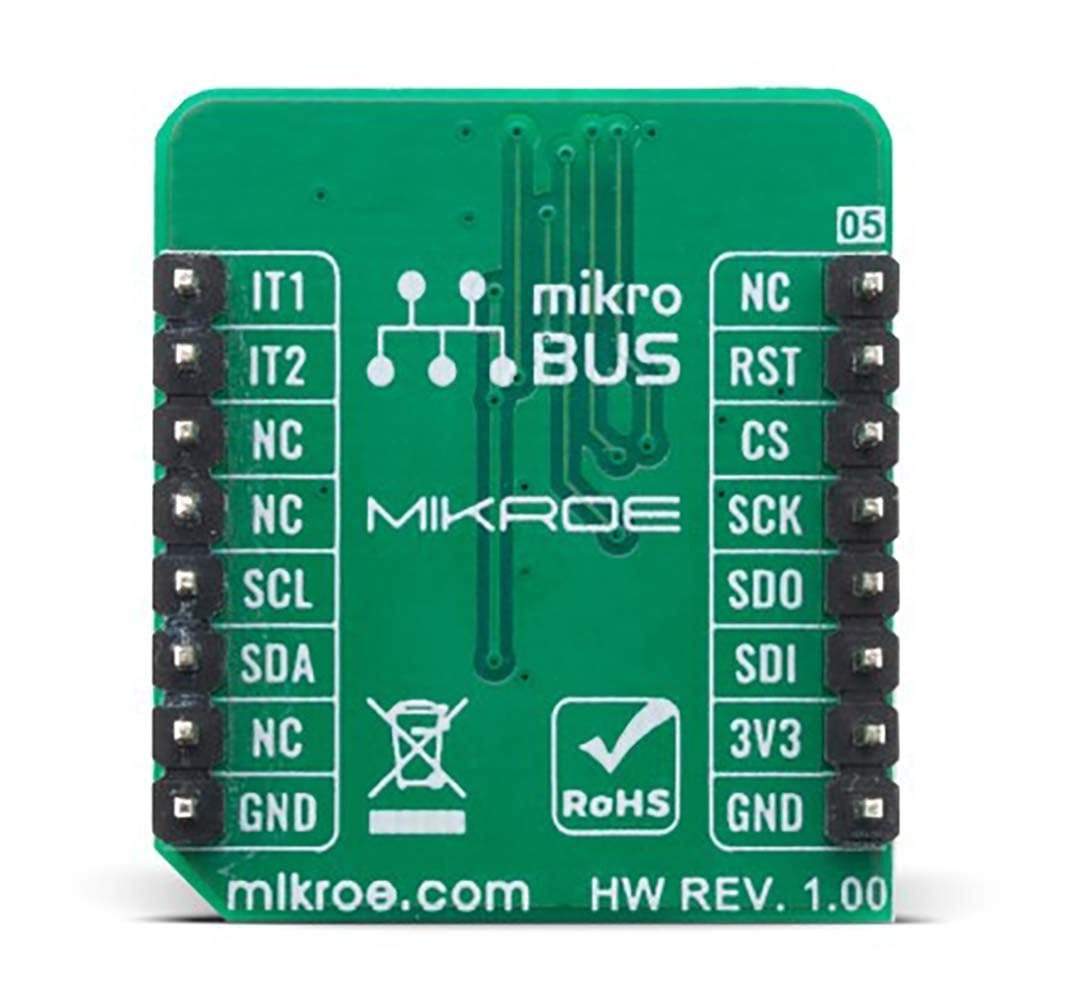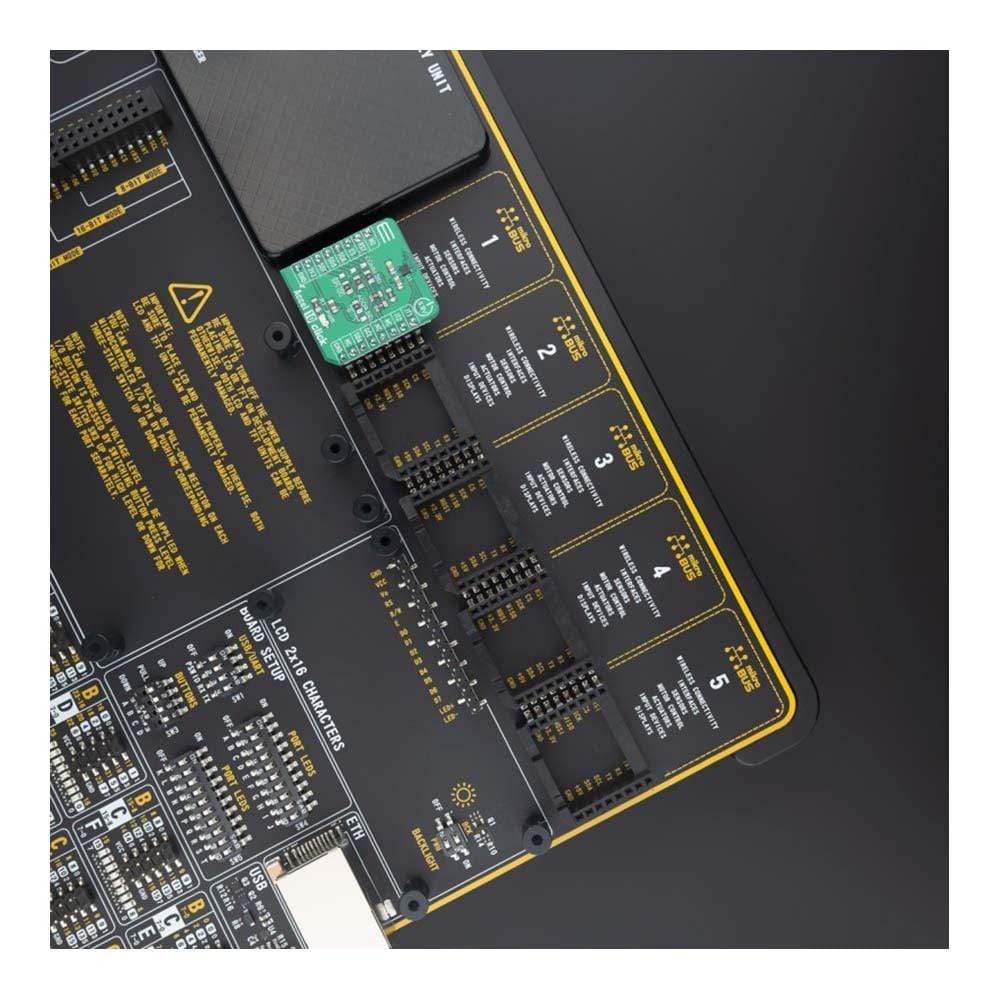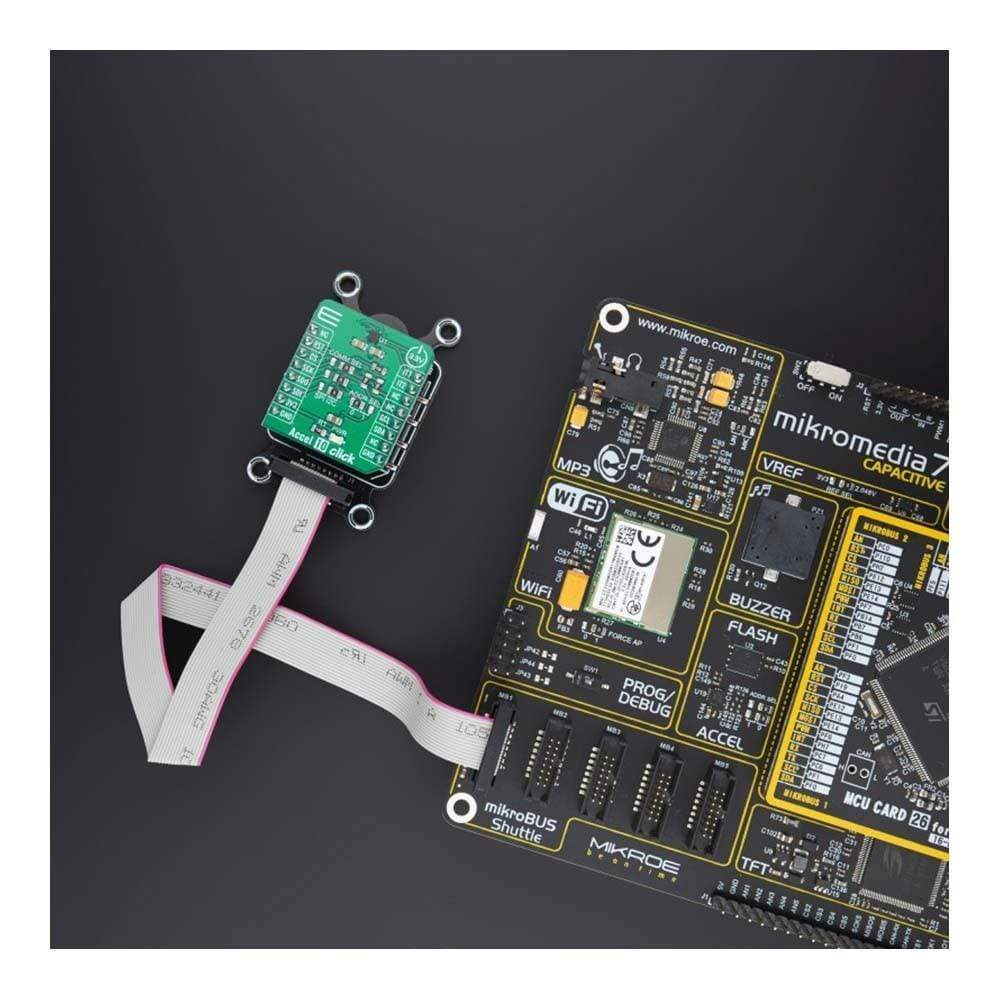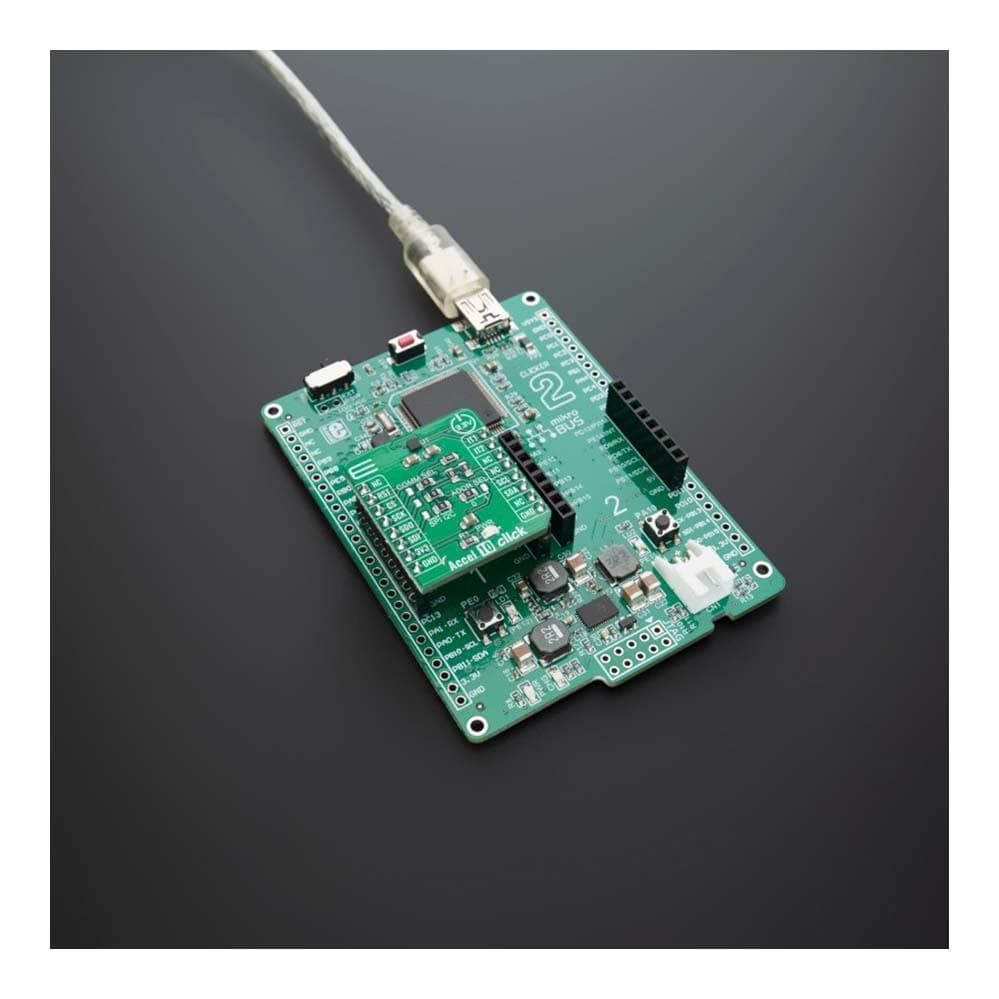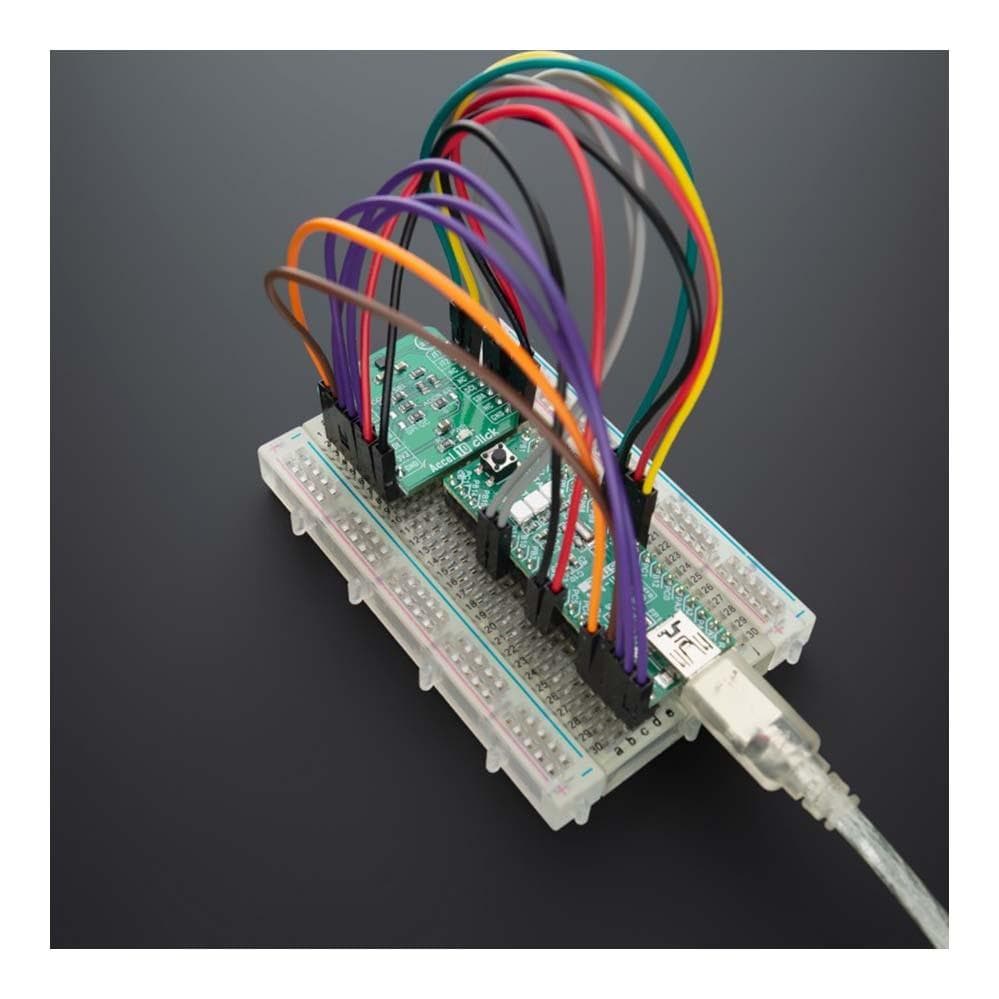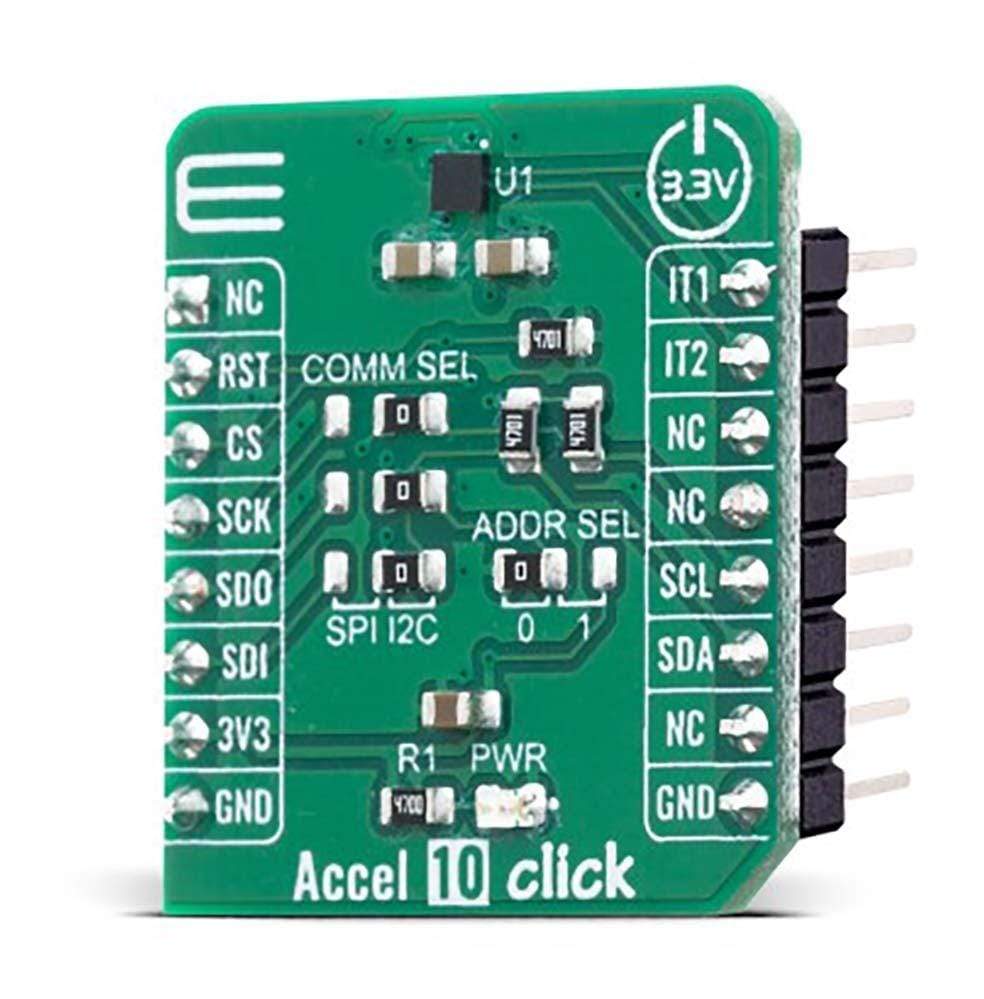
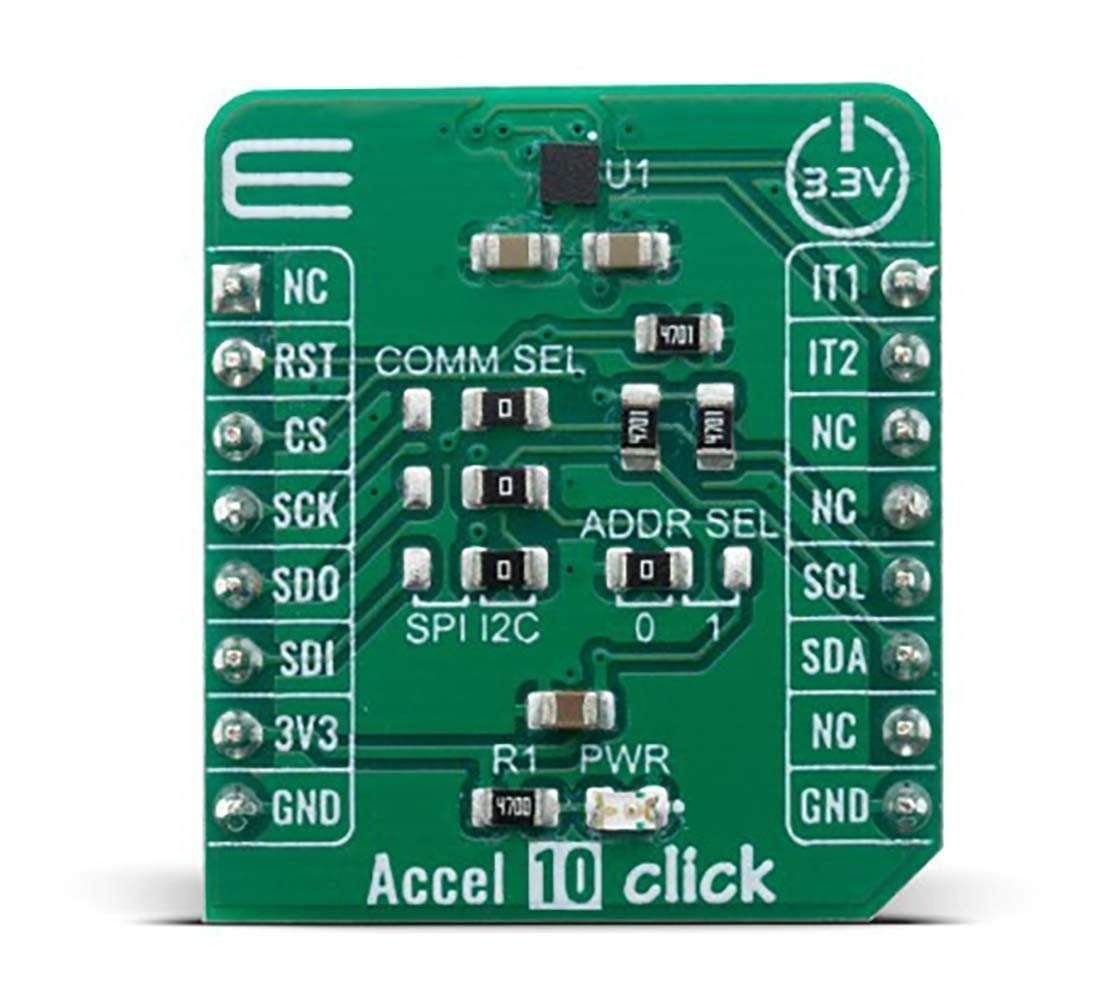
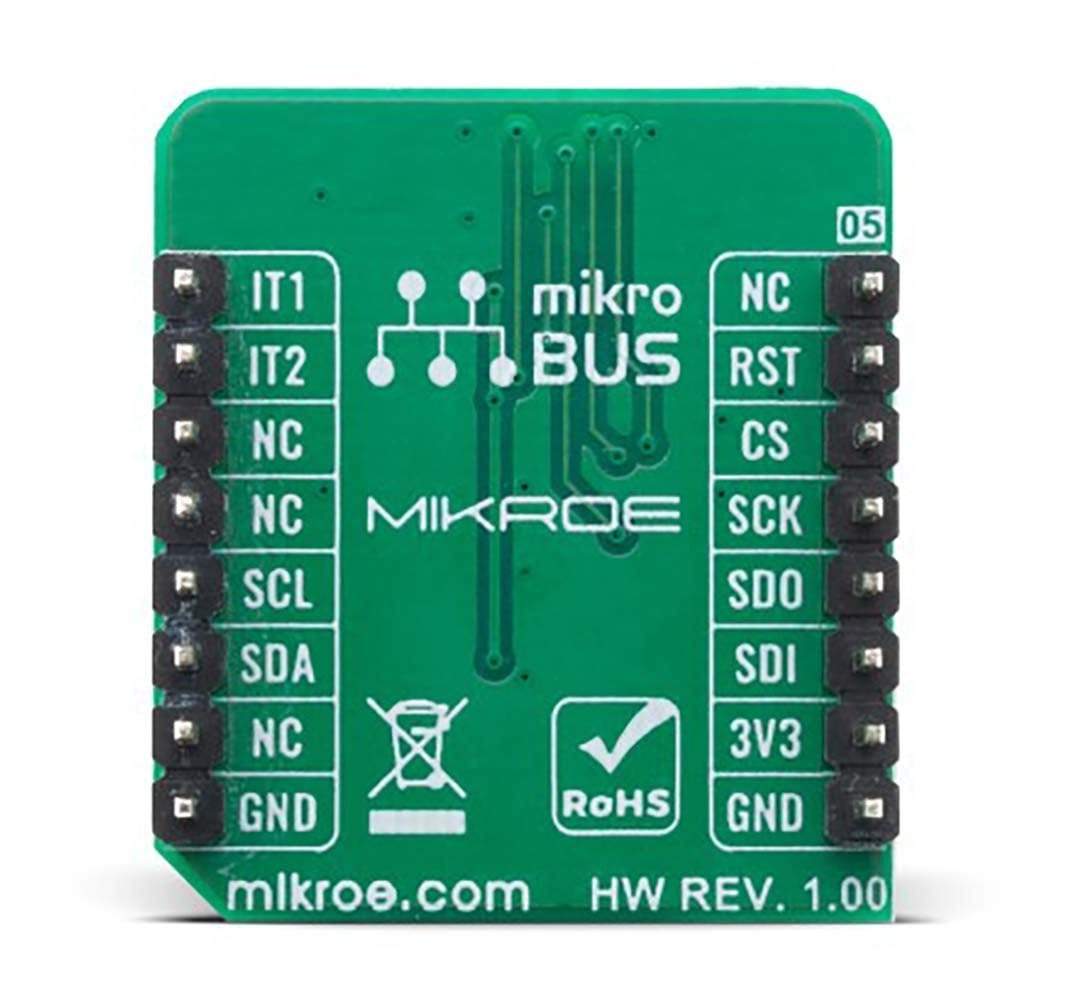
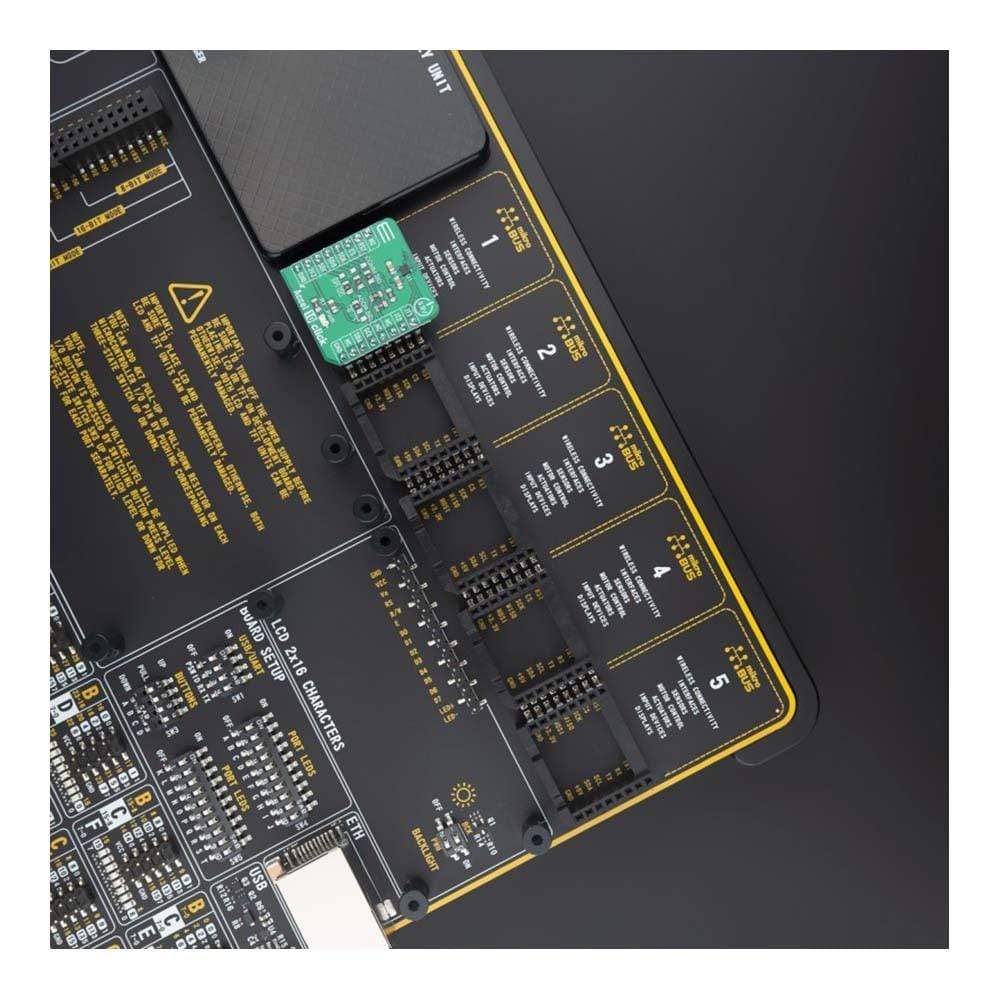
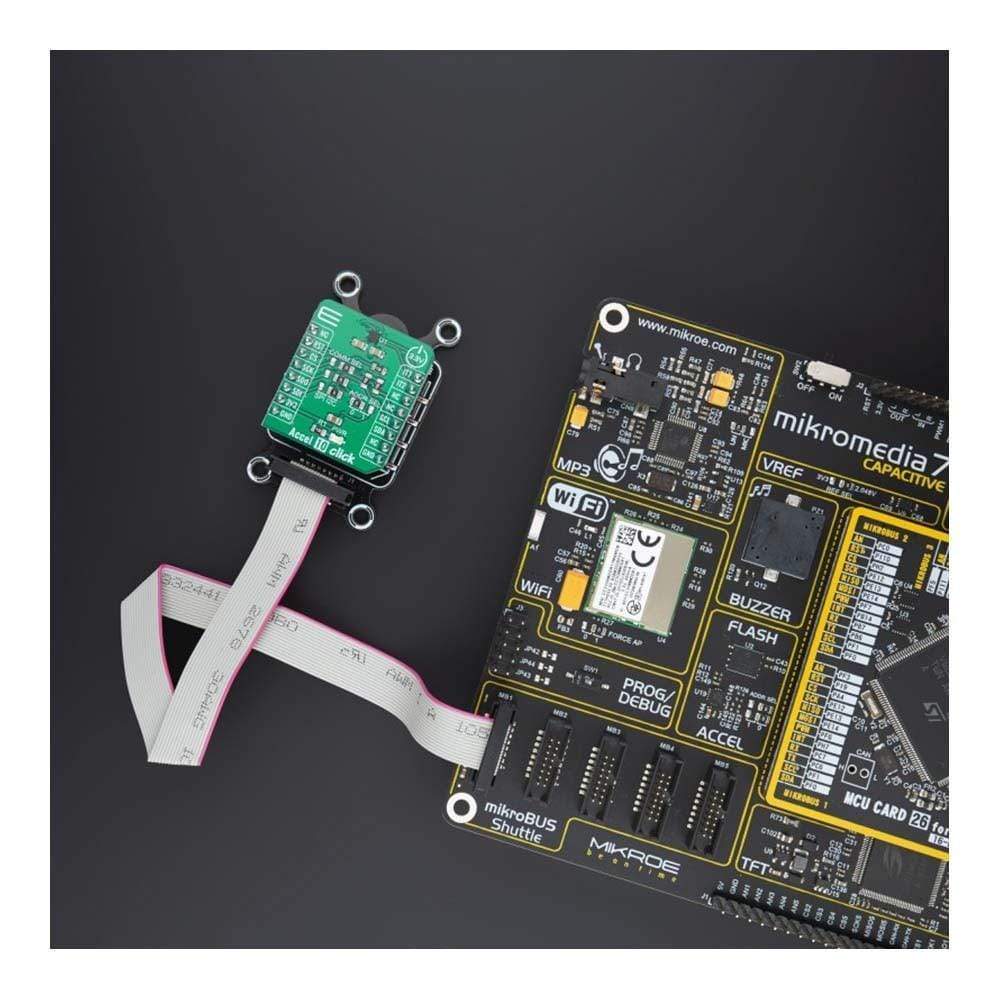
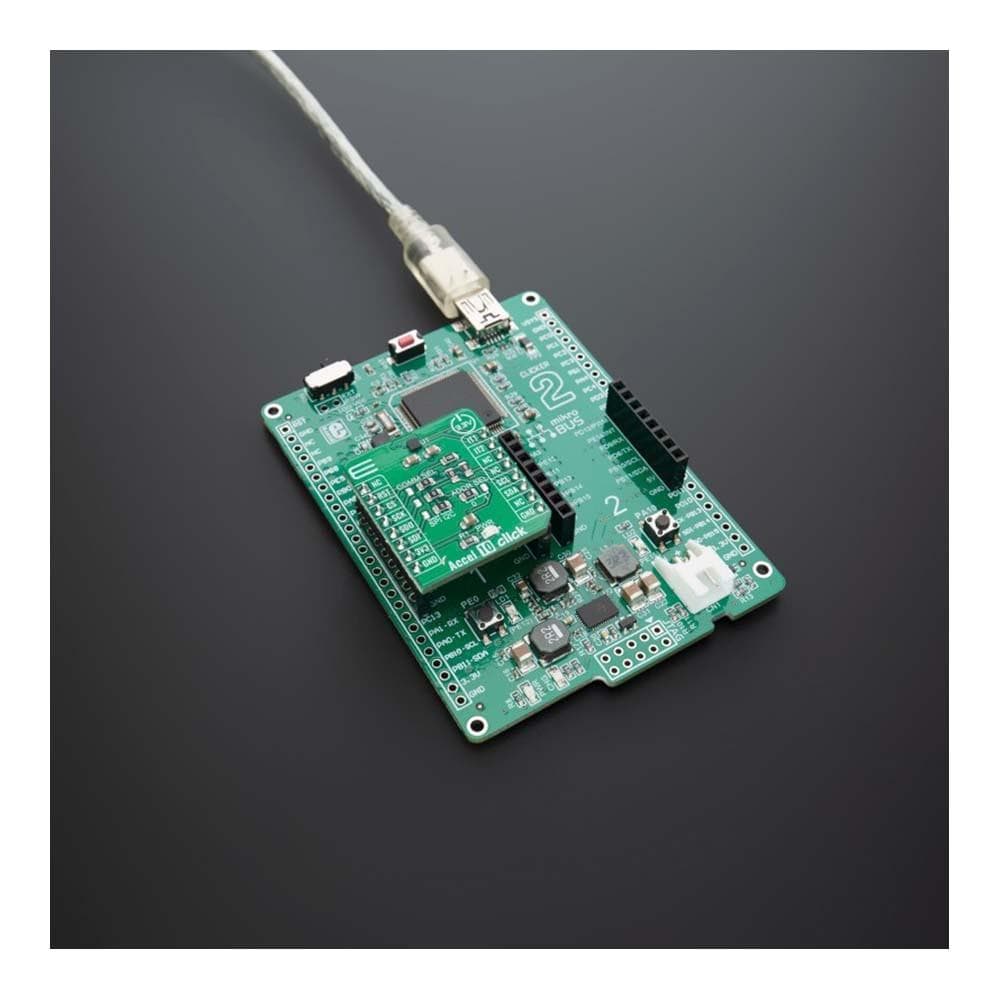
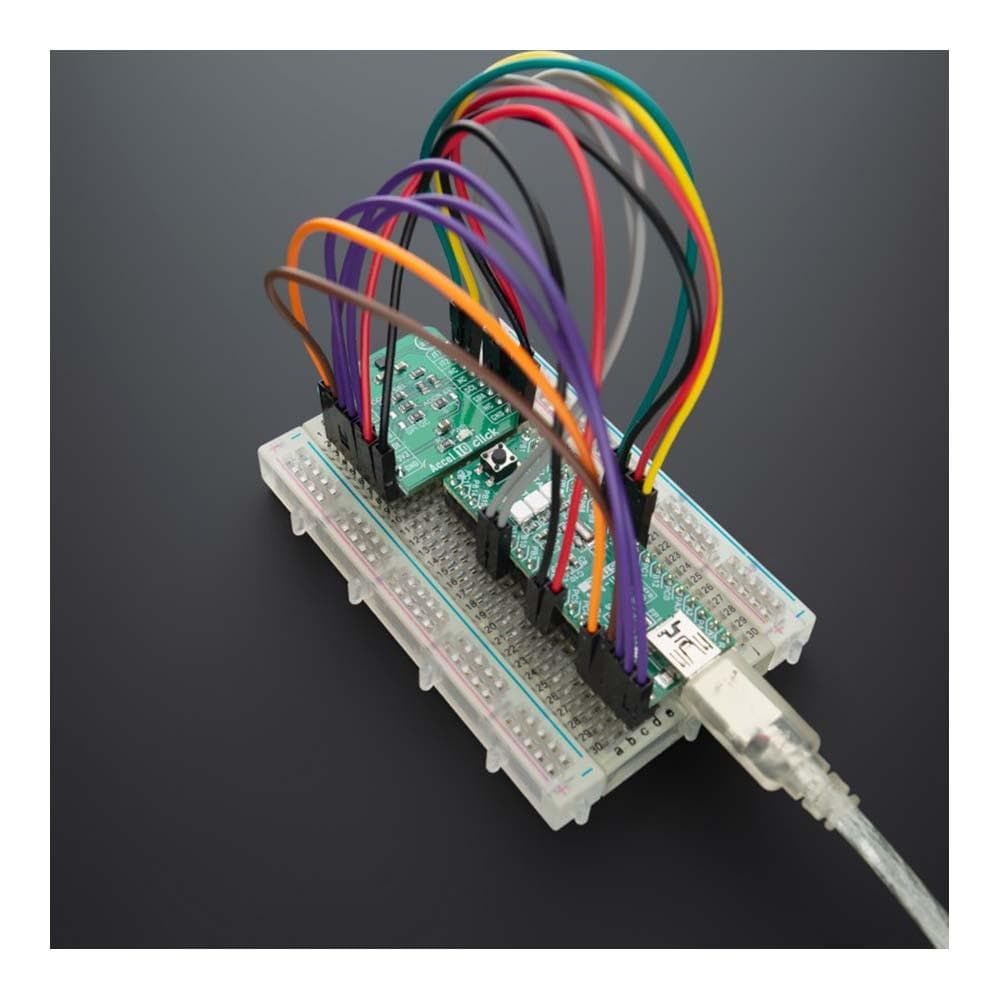
Overview
The Accel 10 Click Board™ features an ultra-low power triaxial "Femto" accelerometer sensor with embedded intelligence, labelled as the LIS2DW12TR. This Click Board™ allows linear motion and gravitational force measurements in ranges of ±2 g, ±4 g, ±8, and ±16 g in three perpendicular axes. This smart sensor allows the Accel 10 Click to detect many different events, including tap, double-tap, free-fall detection, and more, making it well suited for using it in handheld or wearable devices. It features onboard data processing, offering the acceleration data directly, over the standard I2C or SPI interface.
The Accel 10 Click Board™ is supported by a mikroSDK compliant library, which includes functions that simplify software development. This Click Board™ comes as a fully tested product, ready to be used on a system equipped with the mikroBUS™ socket.
The sensor can use any of its two interrupt pins to report a detected event.
Downloads
Das Accel 10 Click Board™ verfügt über einen ultra-energiesparenden dreiachsigen „Femto“-Beschleunigungssensor mit integrierter Intelligenz, der als LIS2DW12TR bezeichnet wird. Dieses Click Board™ ermöglicht lineare Bewegungs- und Gravitationskraftmessungen in Bereichen von ±2 g, ±4 g, ±8 und ±16 g in drei senkrechten Achsen. Mit diesem intelligenten Sensor kann das Accel 10 Click viele verschiedene Ereignisse erkennen, darunter Tippen, Doppeltippen, Freifallerkennung und mehr, wodurch es sich gut für den Einsatz in tragbaren oder tragbaren Geräten eignet. Es verfügt über eine integrierte Datenverarbeitung und bietet die Beschleunigungsdaten direkt über die Standard-I2C- oder SPI-Schnittstelle.
Das Accel 10 Click Board™ wird von einer mikroSDK-kompatiblen Bibliothek unterstützt, die Funktionen enthält, die die Softwareentwicklung vereinfachen. Dieses Click Board™ wird als vollständig getestetes Produkt geliefert und ist bereit für den Einsatz auf einem System, das mit der mikroBUS™-Buchse ausgestattet ist.
Der Sensor kann jeden seiner beiden Interrupt-Pins verwenden, um ein erkanntes Ereignis zu melden.
| General Information | |
|---|---|
Part Number (SKU) |
MIKROE-4112
|
Manufacturer |
|
| Physical and Mechanical | |
Weight |
0.015 kg
|
| Other | |
Country of Origin |
|
HS Code Customs Tariff code
|
|
EAN |
8606018717422
|
Warranty |
|
Frequently Asked Questions
Have a Question?
Be the first to ask a question about this.

